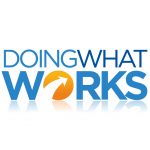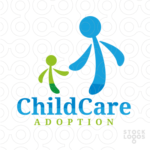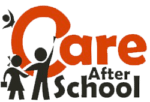General Research
Doing What Works helps educators understand and use research-based practices. This library includes interviews with researchers and educators, multimedia examples and sample materials from real schools and classrooms, and tools that can help educators take action.
This brief illustrates several benefits of after school programs, such as improved literacy skills, enjoyment of recreational reading, and building positive relationships with adults, which reading activities in afterschool can offer to participants.
by Eric Schaps
Published in Perspective, Journal of the Association of YMCA Professionals, October 2005.
Eric Schaps discusses how to improve afterschool programs by building a sense of community with schools. He discusses the importance of community building, creating safe and fun spaces for students, and integrating academic and social skills into activities.
By Victor Battistich, Eric Schaps, and Nance Wilson
Published in The Journal of Primary Prevention, Vol. 24, No. 3, Spring 2004.
This research examined the effects at follow-up during middle school of a comprehensive elementary- school intervention program, the Child Development Project, designed to reduce risk and promote resilience among youth. Parental consent to participate in the middle school study was obtained for 1,246 students from six programs and six matched comparison elementary schools. Three of the program elementary schools were in the “high implementation” group, and three were in the “low implementation” group during the elementary school study. Findings indicated that, studywide, 40% of the outcome variables examined during middle school showed differences favoring program students, and there were no statistically reliable differences favoring comparison students. Among the “high implementation” group, 65% of the outcome variables showed differences favoring program students
A review of the operating costs of a quality out-of-school-time program. Specifically, it looks at measuring the full costs of programs, examining the relationship between cost and quality, and developing cost estimate models.
By Eric Schaps, Victor Battistich, and Daniel Solomon
Published in Building academic success on social and emotional learning: What does the research say? edited by J. Zins, R. Weissberg, M. Wang, & H. Walberg, 189–205. New York: Teachers College Press, 2004.
In the course of this work, it was found that helping schools to become a “caring community of learners” proved pivotal for enabling the full range of students to progress along these several dimensions of development. Along with other researchers, it is now a belief that this priority on community building in school provides a powerful focus for improving Caring Communities and Education educational practice, and especially for practice aimed at helping children to become caring, principled, and intrapersonally and interpersonally effective.
By Eric Schaps
Eric Schaps examines the positive effects of building community in schools amongst school age children, and how school involvement boosts grades and prevents risky behavior. Schap also provides various ways for schools and programs to improve community relations between school and students.
This report aims to put policymakers and program operators on firmer ground as they make these decisions by sharing lessons learned about the design and content of existing school-based, after-school programs.
An investigation of the different types of child care arrangements, including unsupervised ‘self-care’ that has school-age children home alone after school without supervision or structured activities.
This NCES report from the National Household Education Surveys Program presents data on participation in after school activities and programs in the United States. The data are from the After-School Programs and Activities Survey (ASPA) of the 2005 National Household Education Surveys Program.
Not only do arts activities help draw students to after school programs, but, as this brief explains, after school programs with an arts component can be used as an outlet for self expression, a means to uniting community partners, and a tool for academic and skills development.
This study looks at the factors contributing to PCAST (Parental Concern about After-School Time) and the consequences for both parents and employers.










